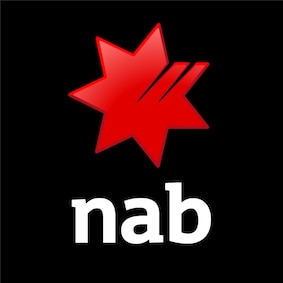Credit card payments | How to save on interest - NAB
Different payments you can make
When making a credit card payment, make sure you know exactly what you’re paying.
Here are the different payments you can make:
- closing balance
- part payments
- total minimum payments
- interest-free days payments (if you have an outstanding balance transfer amount).
This guide explains the basics of each payment type to help you decide which one should you choose and how might they affect you later.
If you have a NAB StraightUp Card, please refer to section 3.4 of the NAB StraightUp Card Terms and Conditions to see how your monthly payments work.
Paying off your 'closing balance'
This is the total amount you owe for that statement period, including interest, fees and purchases.
If you can afford it, it’s best to pay off the closing balance in full by your statement’s due date. If you pay your closing balance in full by the due date each month, not only will you avoid paying interest on the purchases you made that month, but it also gives you interest-free days for purchases you make in the next month.
We understand that paying off the closing balance might not be possible, so your next option should be to pay off as much as you can above your total minimum payment. We’ll call it a ‘part payment’.
Making a 'part payment'
While it’s more than the total minimum payment amount, making a part payment doesn’t pay off the full closing balance. This means you won’t avoid paying interest completely by making a part payment.
Your goal when making payments should be to reduce your balance and interest. Making a part payment will help you do this. The bigger your part payment amount, the more you reduce your daily balance by, which in turn reduces the amount of interest you’ll pay. It also keeps your card below the approved credit limit and helps you avoid late payment fees.
But because you’re not paying your statement off in full (your ‘closing balance’) or your interest free days payment, you’ll still be charged interest.
If you don't pay off your closing balance or your interest free days payment, you lose your interest free days on your purchases.
This is how you can restart your interest-free period for purchases:
- Pay your closing balance in full, or your interest free days payment by the due date. Your interest-free period will then start on the day you make the payment.
- Make sure your account has a zero-credit balance from the first day of a statement period. Your interest-free period will start from the first day of the statement period where the account has the zero-credit balance.
Learn more about how credit card interest is calculated
Making the 'total minimum payment'
The total minimum payment is the amount you’re required to pay by the due date each month. Paying at least this amount by the due date helps you avoid late payment fees so you can keep using your card.
The downside to only making the total minimum payment is that it’ll take longer for you to pay off your balance. Even if you’ve reached your credit limit and stop using your card for purchases, the interest will increase as long as there’s a balance to pay off.
If you pay less than the total minimum payment, you’ll be charged a month’s worth of interest calculated on your balance for each day of that statement period. You’ll also lose your interest-free days for the next statement period.
Your total minimum payment is calculated by adding together your 'monthly payment' and your 'past due or overlimit amount'.
Monthly payment
A monthly payment is the amount due from purchases, fees and transactions you’ve made during your monthly statement period. We work this out by looking at your closing balance for that month.
If your closing balance is:
- more than $1,250, your monthly payment is 2% of the closing balance
- $25 - $1,250, your monthly payment is $25
- less than $25, your monthly payment is the full balance amount.
Past due or overlimit amount
A past due amount is any amount you had to pay in your previous statement period but didn’t.
An overlimit amount is the amount of your closing balance that’s above your credit limit.
If you have one of these, it’ll be included in your total minimum payment and will need to be paid straight away. If you have both, the higher of the two amounts will be included in the total minimum payment to be paid straight away.
Making an 'interest-free days payment'
If you have a balance transfer, make sure you pay your ‘interest-free days payment’ in full by the due date each month to avoid paying interest on purchases.
If you don’t pay the ‘interest free days payment’, the daily interest you’re charged is based on that day’s closing balance. That’s the total of everything you haven’t paid back (including balance transfer amount, purchases, cash advances and fees) plus any interest charges.
The only way to prevent interest charges adding up is to pay your closing balance in full, or if you have a balance transfer your ‘interest free days payment’. This way you'll get your interest-free days on purchases for the next month.
When to make your payments
Our credit cards typically allow you either 14 or 25 days from when the statement period ends to make a payment (your ‘payment window’). We'll run through an example of a statement period and a 14 day payment window.
Example
The interest-free days period begins on the first day of your statement period, not when you make your first purchase.
If the statement period begins on July 5, it’s from this date that the 44 days interest-free period also begins.
If the statement period ends on August 3, you would then have 14 days, ending on August 17, as your ‘payment window’ to make a payment.
Remember that BPAY® payments, cheque payments and transfers from non-NAB accounts can take several days to receive and process. Keep in mind that money must be cleared by the due date.
Making an early payment
You can always make a payment before your statement period ends or before you receive your statement. This will help to reduce your credit card balance and stay under your limit. But once you receive your statement, you’ll still need to make the total minimum payment in order to avoid a late payment fee and continue using your card.
Are you experiencing financial hardship?
If you’re having trouble making payments, call us on 1800 701 599 from Monday to Friday, 8:00am to 8:00pm (AEST/AEDT) and Saturday, 9:00am to 1:00pm (AEST/AEDT). You might also want to read more about Customer Care.
Help and support
How to repay a credit card
We’ve got many different ways you can make your credit card repayments – find one that works best for you.
How to avoid paying credit card interest
Learn how interest on your card works, and ways to avoid paying it.
How to read your credit card statement
We explain how to read your credit card statement to help you make your required payments on time and avoid interest and fees.
Get in touch
Customer Support Tool
Solve problems quickly online with our easy-to-follow guides. Simply select a topic and we’ll direct you to the information you need.
Contact us
Explore our personal banking contact information and get support with a wide range of products, services and topics.
Visit a NAB branch
Visit us in person at your nearest NAB branch or business banking centre.
Terms and Conditions
Apologies but the Important Information section you are trying to view is not displaying properly at the moment. Please refresh the page or try again later.
Credit cards issued by National Australia Bank Limited.
The information contained in this article is intended to be of a general nature only. It has been prepared without taking into account any person’s objectives, financial situation or needs. Before acting on this information, NAB recommends that you consider whether it is appropriate for your circumstances. NAB recommends that you seek independent legal, financial and taxation advice before acting on any information in this article.
BPAY® is registered to BPAY Pty Ltd ABN 69 079 137 518.


